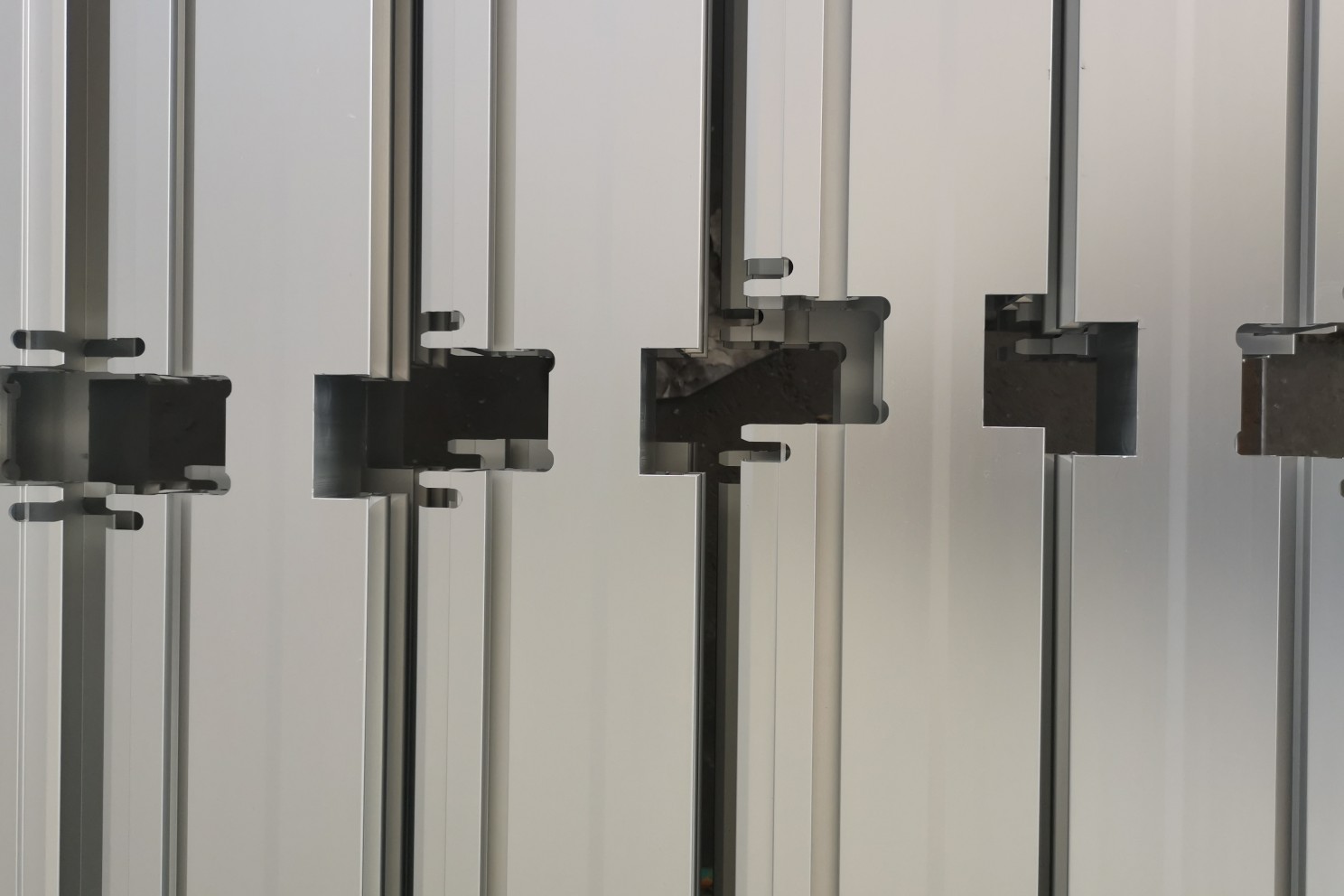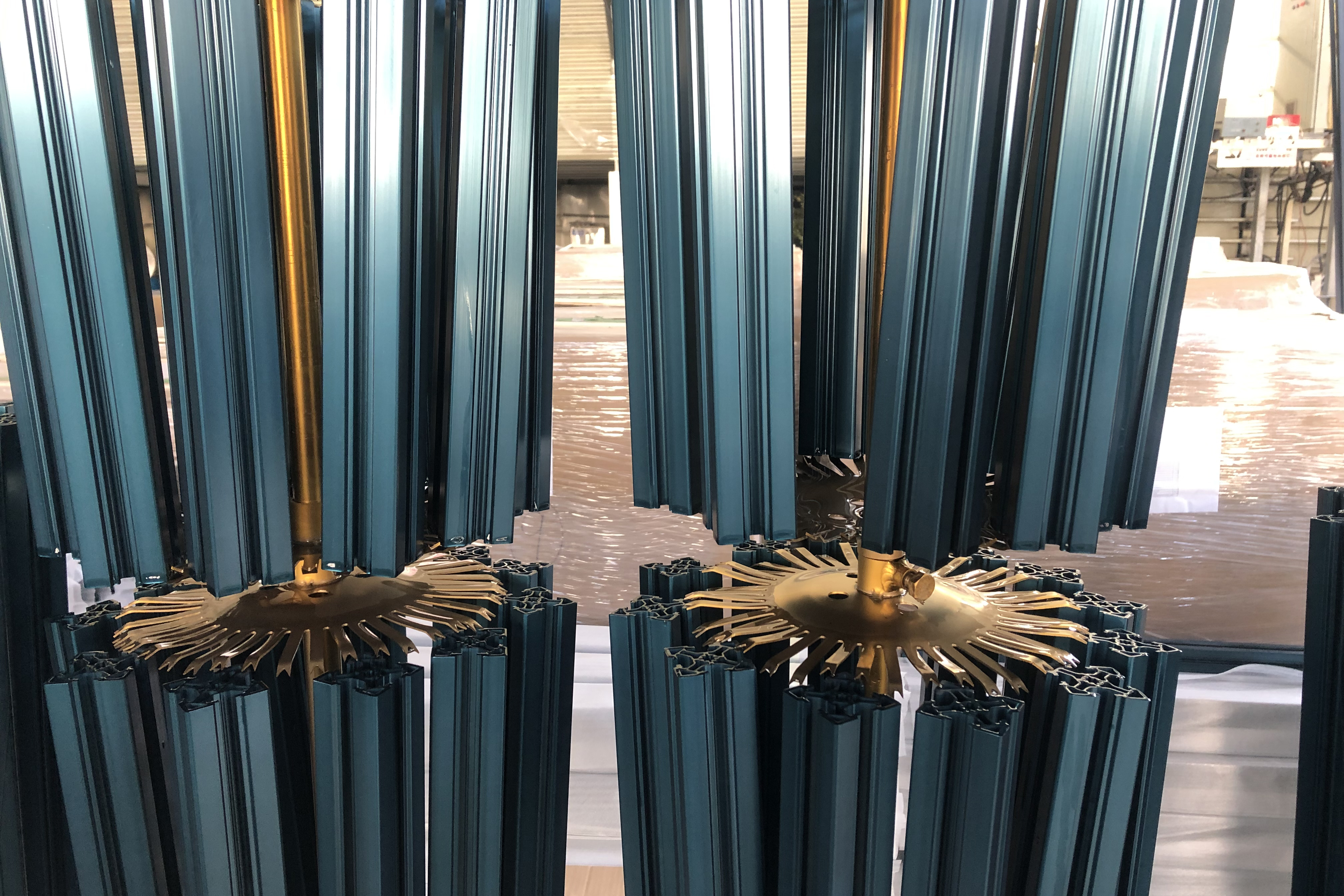Process
Flow
1.Anodizing
of silver-based materials and silver-based electrophoretic materials: Loading -
Water rinsing - Low-temperature polishing - Water rinsing - Water rinsing -
Clamping - Anodizing - Water rinsing - Water rinsing - Water rinsing - Sealing
holes - Water rinsing - Water rinsing - Blanking - Air drying - Inspection -
Entering the electrophoresis process - Packaging.
2.Anodizing
of frosted materials and frosted electrophoretic materials: Loading -
Degreasing - Water rinsing - Acid etching - Water rinsing - Water rinsing -
Alkali etching - Water rinsing - Water rinsing - Neutralization and brightening
- Water rinsing - Water rinsing - Clamping - Anodizing - Water rinsing - Water
rinsing - Water rinsing - Sealing holes - Water rinsing - Water rinsing - Blanking
- Air drying - Inspection - Entering the electrophoresis process - Packaging.
3.Anodizing
of coloring materials and coloring electrophoretic materials: Loading - Water
rinsing - Low-temperature polishing - Water rinsing - Water rinsing - Clamping
- Anodizing - Water rinsing - Water rinsing - Water rinsing - Coloring - Water
rinsing - Water rinsing - Sealing holes - Water rinsing - Water rinsing -
Inspection - Entering the electrophoresis process - Blanking - Air drying -
Inspection - Packaging.

Anodizing products of MAT Aluminum
Material Loading
1.Before
loading the profiles, the contact surfaces of the lifting rods should be
polished clean, and the loading should be done according to the standard
number. The calculation formula is as follows: Number of loaded profiles =
Standard current density x Single profile area.
2.Principles
for considering the number of racks: The utilization rate of the silicon
machine capacity should not exceed 95%; the current density should be set at
1.0-1.2 A/dm; the profile shape should leave necessary gaps between two
profiles.
3.Calculation
of anodizing time: Anodizing time (t) = Film thickness constant K x Current
density k, where K is the electrolysis constant, taken as 0.26-0.32, and t is
in minutes.
4.When
loading the upper racks, the number of profiles should follow the "Profile
Area and Number of Upper Racks" table.
5.To
facilitate liquid and gas drainage, the upper racks should be tilted during
bundling, with an inclination angle of around 5 degrees.
6.The
conductive rod can extend beyond the profile by 10-20mm on both ends, but it
should not exceed 50mm.
Low-temperature Polishing Process
1.The
concentration of low-temperature polishing agent in the tank should be
controlled at a total acid concentration of 25-30 g/l, with a minimum of 15
g/l.
2.The
temperature of the polishing tank should be maintained at 20-30°C, with a
minimum of 20°C. The polishing time should be 90-200 seconds.
3.After
lifting and draining the residual liquid, the profiles should be quickly transferred
to a water tank for rinsing. After two water rinses, they should be promptly
transferred to the anodizing tank. The residence time in the water tank should
not exceed 3 minutes.
4.Before
polishing, the low-temperature polishing materials should not undergo any other
treatment, and other tank liquids should not be introduced into the polishing
tank.
Degreasing Process
1.The
degreasing process is carried out in an acid solution at room temperature, with
a duration of 2-4 minutes and an H2SO4 concentration of 140-160 g/l.
2.After
lifting and draining the residual liquid, the profiles should be placed in a
water tank for rinsing for 1-2 minutes.
Frosting (Acid Etching) Process
1.After
degreasing, the profiles should be rinsed in a water tank before entering the
acid etching tank.
2.Process
parameters: NH4HF4 concentration of 30-35 g/l, temperature of 35-40°C, pH value
of 2.8-3.2, and acid etching time of 3-5 minutes.
3.After
acid etching, the profiles should go through two water rinses before entering
the alkali etching tank.
Alkali Etching Process
1.Process
parameters: Free NaOH concentration of 30-45 g/l, total alkali concentration of
50-60 g/l, alkali etching agent of 5-10 g/l, AL3+ concentration of 0-15 g/l,
temperature of 35-45°C, and alkali etching time for sand materials of 30-60
seconds.
2.After
lifting and draining the solution, the profiles should be quickly transferred
to a water tank for thorough rinsing.
3.The
surface quality should be checked after cleaning to ensure there are no
corrosion marks, impurities, or surface adhesion before entering the
brightening process.
Brightening Process
1.Process
parameters: H2SO4 concentration of 160-220 g/l, HNO3 in appropriate amount or
50-100 g/l, room temperature, and brightening time of 2-4 minutes.
2.After
lifting and draining the residual liquid, the profiles should be quickly
transferred to a water tank for 1-2 minutes, followed by a second water tank
for another 1-2 minutes.
3.After
two rounds of cleaning, the aluminum wire on the racks should be clamped
tightly to ensure good contact during the anodizing process. Ordinary materials
are clamped at one end of the rack's aluminum wire, while coloring materials
and electrophoretic materials are clamped at both ends.
Anodizing Process
1.Process
parameters: H2SO4 concentration of 160-175 g/l, AL3+ concentration ≤20 g/l,
current density of 1-1.5 A/dm, voltage of 12-16V, anodizing tank temperature of
18-22°C. The electrification time is calculated using the formula. anodized
film requirements: silver material 3-4μm, white sand 4-5μm, electrophoresis 7-9μm;
2.The
anode racks should be placed steadily in the conductive seats, and it should be
confirmed that there is no contact between the profiles and the cathode plate
before starting the anodizing process.
3.After
anodizing, the anode rods should be lifted out of the liquid, tilted, and
drained of residual liquid. Then they should be transferred to a water tank for
rinsing for 2 minutes.
4.Non-coloring
profiles can enter the secondary water tank for sealing treatment.
Coloring Process
1.Coloring
products should only be arranged in single-row double-line configurations, with
a distance between products equal to or greater than the corresponding face
width of adjacent products. Generally, when measured by fingers, the distance
should be greater than or equal to the width of two fingers. The bundles must
be tight and secure, and only new lines should be used for bundling.
2.The
anodizing tank temperature during coloring should be controlled at 18-22°C to
ensure uniform and fine anodized film thickness.
3.The
anodized coloring areas in each row should be approximately equal.
4.After
coloring, the profiles should be tilted, compared with a color board, and if
the conditions are met, they can be rinsed in a water tank. Otherwise, specific
measures should be taken.
5.It
is advisable to avoid coloring different types of products or different batches
of products on the same rack.

Anodizing products of MAT Aluminum
Sealing Process
1.Place
the anodized profiles in a sealing tank to close the porous anodized film and
enhance the corrosion resistance of the anodized film.
2.Process
parameters: Normal sealing temperature of 10-30°C, sealing time of 3-10
minutes, pH value of 5.5-6.5, sealing agent concentration of 5-8 g/l, nickel
ion concentration of 0.8-1.3 g/l, and fluoride ion concentration of 0.35-0.8
g/l.
3.After
sealing, lift the racks, tilt and drain the sealing liquid, transfer them to a
water tank for a second rinse (1 minute each time), blow dry the profiles,
remove them from the racks, inspect and dry them before packaging.
Edited
by May Jiang from MAT Aluminum